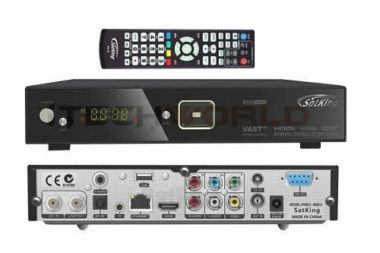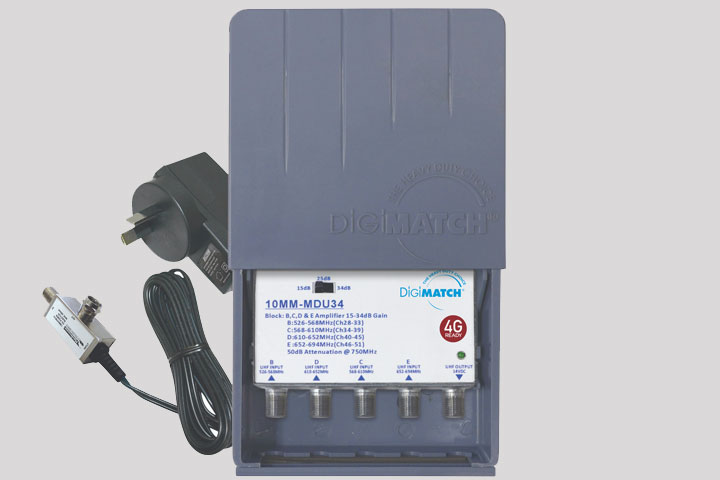VAST Satellite Kit – foxtel
Satellite Dish 80 cm kit for tin roof with LNBF dual output dual polarity Foxtel vast FTA
Satellite Dish 80 cm kit for tin roof with LNBF dual output dual polarity Foxtel vast FTA
Satellite Dish 80 cm kit for tin roof with LNBF dual output dual polarity Foxtel vast FTA
Satellite Dish 80 cm kit for tin roof with LNBF dual output dual polarity Foxtel vast FTA
This 65cm Diameter Satellite dish is sufficient for most of the eastern seaboard.
This 65cm Diameter Satellite dish is sufficient for most of the eastern seaboard.
Caravan Vast Portable dish Kit will allow you to receive Foxtel and /or vast TV services. What’s in the box?
Caravan Vast Portable dish Kit will allow you to receive Foxtel and /or vast TV services. What’s in the box?
Deluxe 6-piece 80cm Satellite Receiver Kit for your house cable included.
Deluxe 6-piece 80cm Satellite Receiver Kit for your house cable included.
Foxtel approved. Quad output KU band LNB with 10.7GHz L.O.. Heavy-duty tin roof mount
Foxtel approved. Quad output KU band LNB with 10.7GHz L.O.. Heavy-duty tin roof mount
VAST Reception. KU Band. Rolled edges for greater strength
VAST Reception. KU Band. Rolled edges for greater strength
VAST reception. KU band. Rolled edges for greater strength
VAST reception. KU band. Rolled edges for greater strength
VAST reception. KU band. Rolled edges for greater strength
VAST reception. KU band. Rolled edges for greater strength
VAST reception. KU band. Rolled edges for greater strength
VAST reception. KU band. Rolled edges for greater strength
VAST reception. KU Band. Rolled edges for greater strength
VAST reception. KU Band. Rolled edges for greater strength
VAST reception. KU band. Rolled edges for greater strength
VAST reception. KU band. Rolled edges for greater strength
Foxtel Approved. Quad Offset Output LNB. Heavy Duty Wall mount
Foxtel Approved. Quad Offset Output LNB. Heavy Duty Wall mount
Watch free to air television anywhere on the Eastern Seaboard with a dedicated dish and set top box using VAST Satellite TV. The dish you see below is the same antenna required to view paid services such as Foxtel. Give us a call to learn more.

The Australian Government funds a free-to-air satellite service. VAST or Viewer Access Satellite Television. VAST provides digital television to viewers in remote areas of Australia where users are unable to receive digital TV through their normal TV antenna. This is normally due to local interference, terrain, or distance from the transmitter in their area.
To access VAST TV you will need to buy a VAST certified satellite dish of at least 65cm diameter. Contact the Antenna Company to arrange a satellite dish installer to determine the best dish size for your specific location.

Accessing VAST TV is as simple as purchasing a VAST certified satellite set-top box. Access to VAST is controlled by the smart card supplied with your satellite set-top box.
Once you have purchased your Satellite set-top box you will need to register your details including your address, reception location, and smart card number. You can register for a VAST service by going here.
Registration validity click here
IMPORTANT – the unique smart card and set-top box are matched at the factory level. Smart cards cannot be swapped or used in multiple boxes.

The TV signal coverage you can receive depends on where you live and the surroundings. Some areas are on the edge of coverage limits, so it’s important to have your antenna system fully optimised. If you live outside the terrestrial television coverage, you can still receive a full set of digital channels via satellite.
Boosters can be used in areas where television signals are very weak because of intervening terrain, or due to the distance to the broadcast transmitter.
Viewers are encouraged to regularly visit the VAST Information Channel on CH800 for updates on new channel additions and VAST platform changes and improvements.
“John assisted me promptly with an issue I was having and was extremely knowledgeable and helpful. Highly recommended.”
Tracy M.
We have 44 five star reviews on google (at the time of writing).
Access to Commercial TV services is subject to an eligibility test that takes into account commercial television licence areas and availability of conventional terrestrial television services at your location.
Check that you are eligble for VAST here.
The best way is to give us a call on 0490 777 033.
To access VAST you will need a satellite set top box and a satellite dish of at least 65cm diameter. Contact us to determine the best dish size for your specific location.
Masthead amplifiers (MHA) or distribution amplifiers often called ‘signal boosters’ are not an integral part of what we call ‘optimized television receiving installation’. They should be installed only if necessary. These kinds of devices can cause reception difficulties and even interfere with your neighbours’ TV reception, so do your research before using them.
An MHA or ‘booster’ should only be used in areas where television signals are very weak because of intervening terrain, vegetation and buildings, or due to the distance between the broadcast transmitter and television antenna. An MHA is typically installed next to your TV antenna.
A distribution amplifier is used to distribute the signal to several television receivers. Unlike an MHA, a distribution amplifier is installed within the building in which it operates, usually within the roof area. Distribution amplifiers can be used in houses with multiple TV sets, hotels, motels, blocks of units and similar high-occupancy buildings.
If your local expert determines that a masthead or distribution amplifier is necessary to provide enough signal level to your television receivers, we strongly advise that you ask her or him to install an amplifier with a built-in filter or to install a filter in front of the amp. This will limit the potential impact of mobile broadband signals on your television reception.
Television signals are transmitted either horizontally (H) or vertically (V). This is called ‘signal polarisation’. Your antenna should be installed so that its elements match the signal polarization – that is, antenna elements should be mounted horizontally to receive horizontally polarised TV signals and vice versa.
Signal polarisation is also location-specific, l thoroughly check for any polarisation before installing your antenna.
Climbing on the roof is extremely dangerous, so contact the experts to make sure your satellite is safely and correctly installed.
Your satellite should be mounted outdoors, up to five meters high for urban and suburban areas and up to 10 metres high for some rural areas or areas with marginal coverage, pointing towards the TV tower that provides the best television coverage for your area.
The signal level may vary significantly for different locations on your roof. Your satellite installer should be able to do a site survey and find the best place for your antenna on your roof, free of local clutter (big trees and surrounding building) and other domestic signal obstacles.
If you’re replacing your antenna, don’t assume the best spot is an existing location/pole. The environment may have changed due to mature trees and new buildings. A fresh site survey for good signal strength and a quality signal may be necessary but remember that this is a job best left to the experts!
For good TV reception, you should use so-called ‘quad-shield coaxial cable’ (type RG6) with ‘F’ type connectors. Quad-shield cable provides better shielding against noise and external interference than single- or dual-shield cables.
Fly leads, which are used to connect wall outlet plates to either the set-top box or TV, are the weakest link in the antenna installation.
Quad-shield fly leads provide superior performance compared to other types. You should take care to maintain adequate clearance (at least 50 mm) from AC mains power cabling and leads to minimising induction of impulse noise. Excessive bending and long fly leads can also cause problems for TV reception. It’s best to use custom-made fly leads rather than connecting two or more leads.
Sometimes you need to use ‘splitters’ to divide the signal from the antenna so that two or more TV receivers can operate efficiently from one antenna system. But be careful—using a splitter can mean some loss of signal.
The satellite dish must have a diameter of at least 65cm and be VAST certified. It is best to talk to an expert on whether a satellite will work in your area.